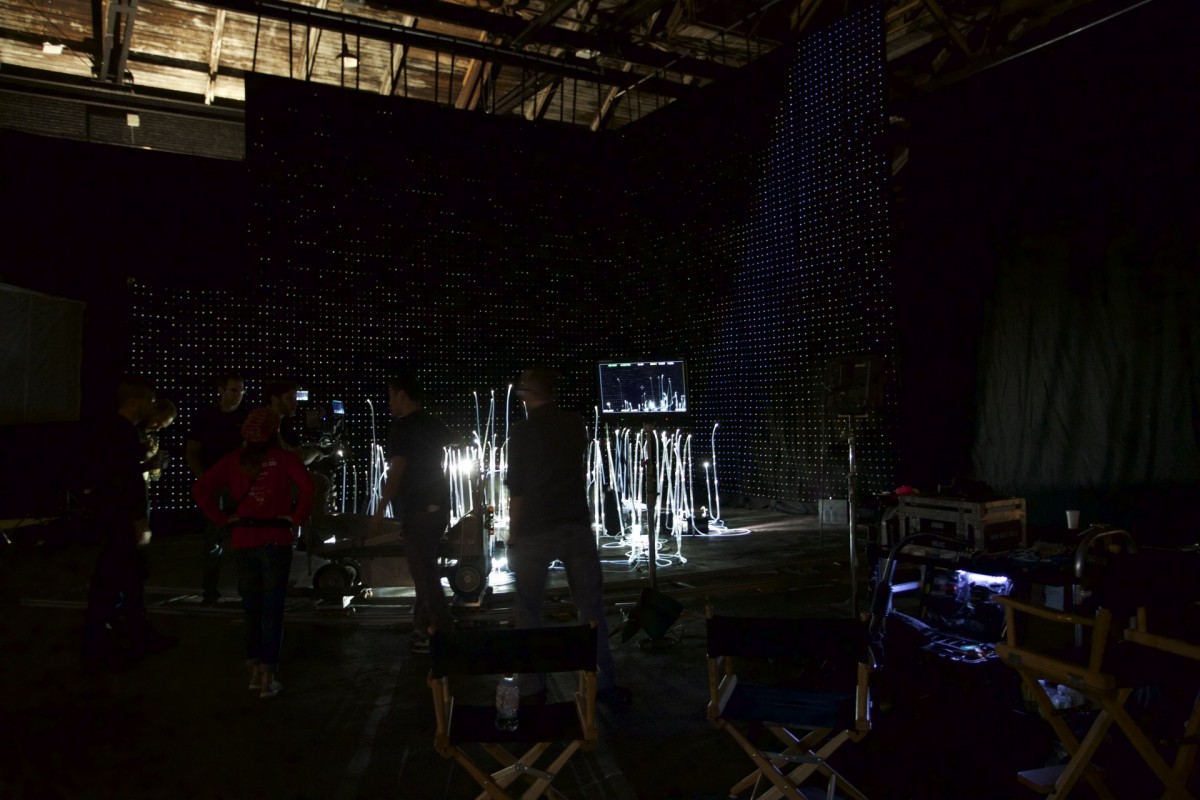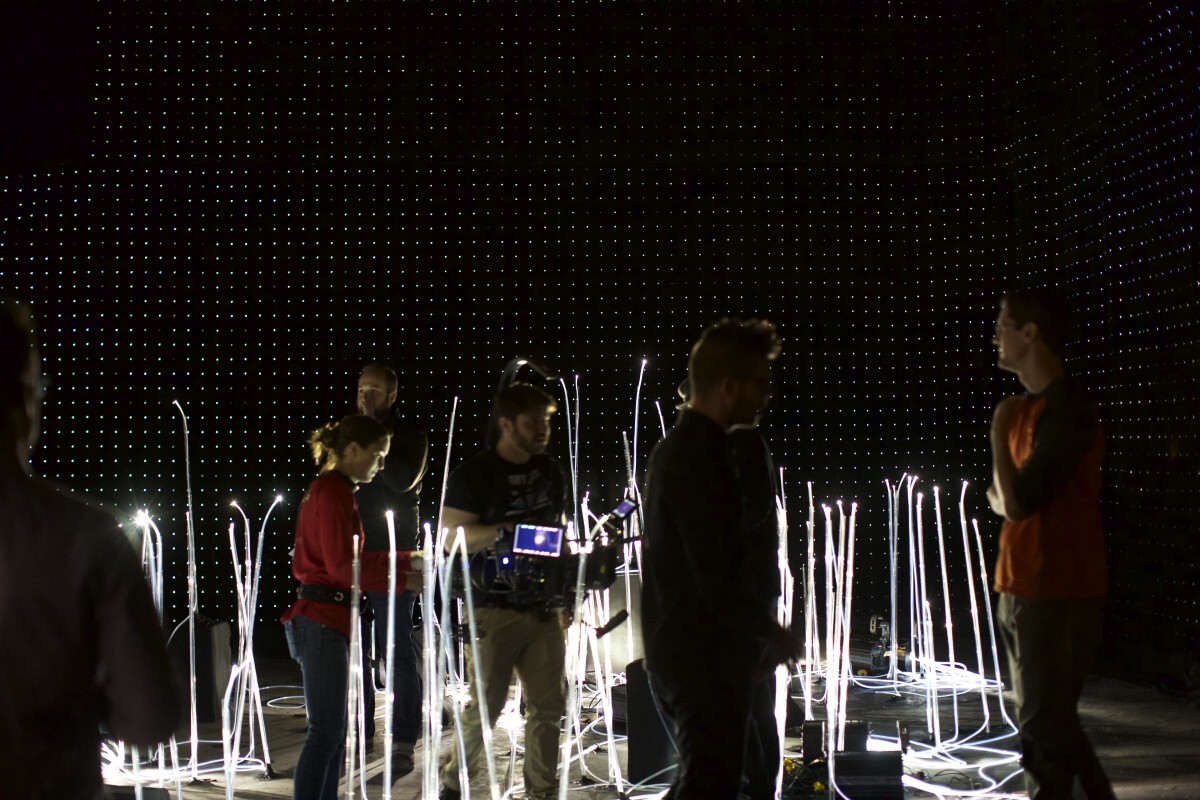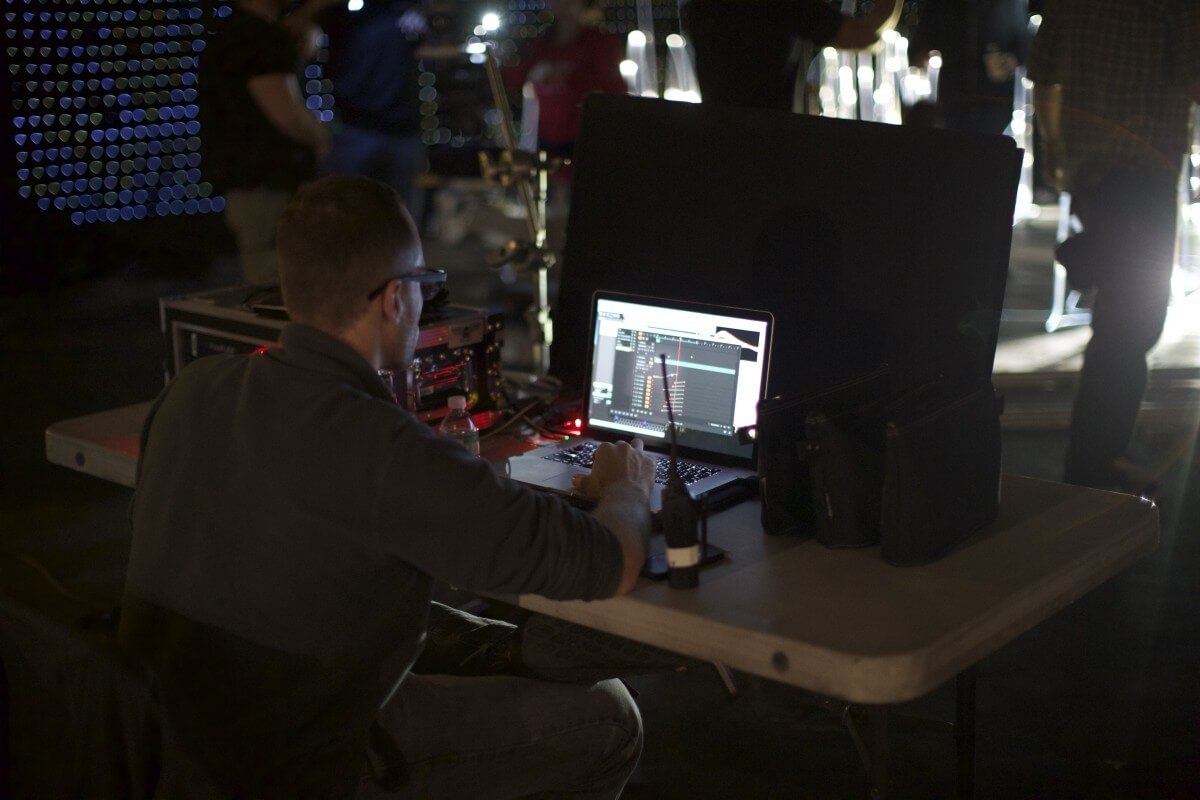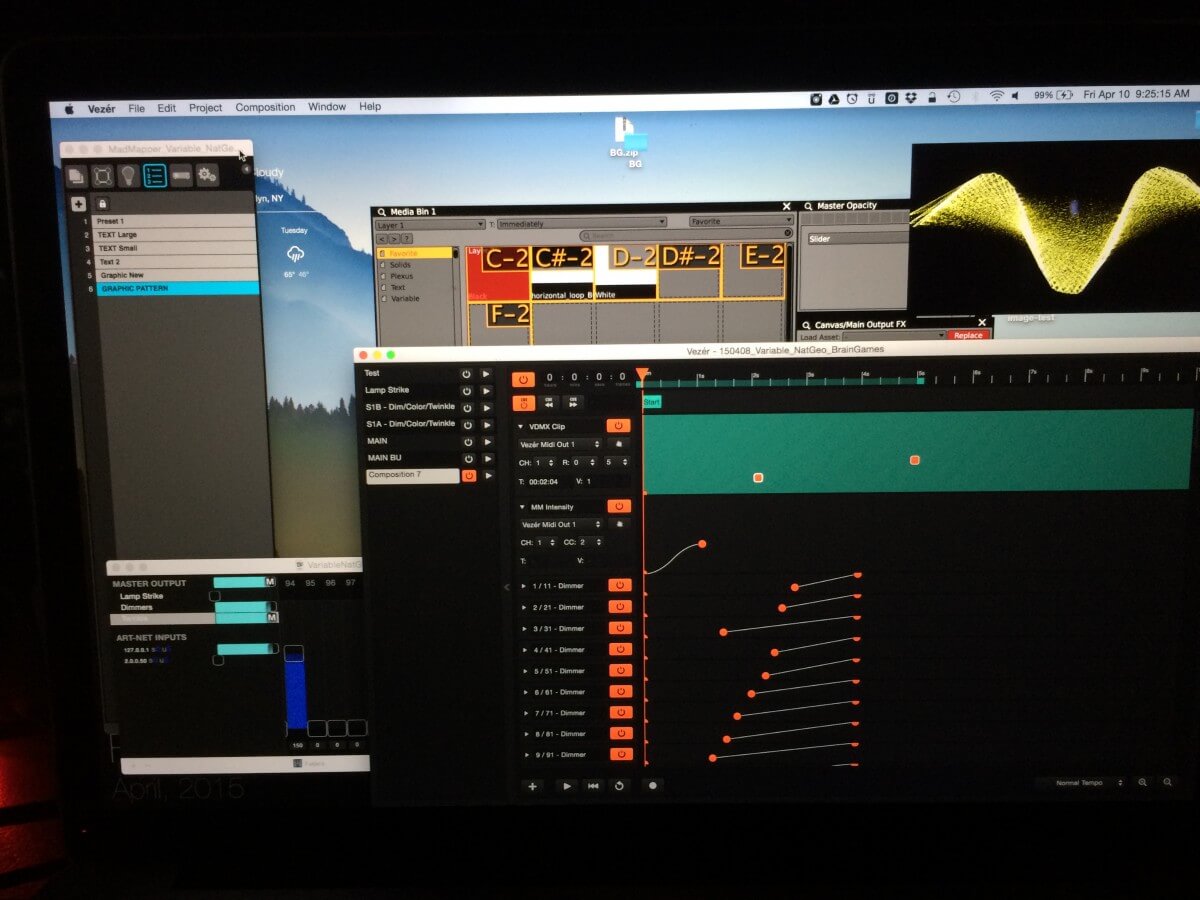Fiber optic lighting and LED curtains makes the famous National Geographics Channel's Brain Games TV Spot elegantly futuristic.
Now we have a chance to take a look behind the scenes and get know how the system worked, thanks to Nick Rivero from Meptik!
Last year we at Meptik collaborated with our friends, NYC based film production team, Variable, to help put together some LED visuals and fiber optic lighting tech on a TV commercial shoot for National Geographic’s show Brain Games. Variable had worked with National Geographic to design a backdrop for the commercial shoot that incorporated LED video curtains along with a garden of fiber optic lights and we came in to tie it all together and make it all light up on camera.

The walls were comprised of PixelFlex Curtain from PixelFlex out of Nashville. They are 100mm traveling LED curtains, approximately 3m x 3m in size. They travel in a pretty small amount of room and, when setup, cover a great amount of space. The ground work was a series of Martin DMX fiber optic light generators with some fiber optic strands tracing around the floor.

When it came time to talk to all the gear, I went with Vezér to make it all talk. I had been excited to use this app for quite some time, and on this shoot, it really made sense. When the director said “take”, I was able to make everything turn on in a certain succession, and a certain speed, to their liking. Using multiple timelines, I was able to create different looks that could either play out once, or sometimes loop as well. For instance, in one take, I would make the various fiber optic DMX controllers light up one by one followed by the LED lighting up successively. On another take, I could make everything just jump on and then keyframe the fiber optic emitters to do different effects or colors from there.

My workflow looked like this:
- Vezér was the main control point. I sent MIDI commands to two different applications.
- First, I sent MIDI commands into VDMX to trigger various clips to be played on the LED walls.
- VDMX fed into MadMapper which allowed me to quickly change how the images were mapped and scaled onto the LED walls.
- I then sent additional MIDI commands into an app called DMX Assistant.
- The MIDI would control “scenes” within DMX Assistant that would then call on the various DMX functions of the fiber optic emitters. By using DMX Assistant I was able to bring up multiple programs of DMX with one MIDI note easily.
- I also sent an additional MIDI channel to MadMapper to control the overall intensity so that I could easily just black out the entire output to the LED wall.

Meptik is an Atlanta-based production and design studio specialized in creating interactive environments that blend creativity, human interaction, and technology.